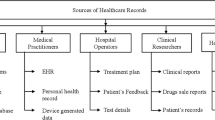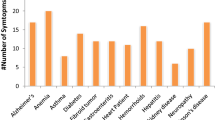Abstract
Big Data (BD) has turned into a significant research field owing to the dawn of vast quantity of data generated as of various sources like Internet of things (IoT), social media, and also multimedia applications. BD has played an imperative part in numerous decision-makings as well as forecasting domains for instance health care, recommendation systems, web display advertisement, transportation, clinicians, business analysis, and fraud detection along with tourism marketing. The domain of health care attained its influence by the effect of BD since the data sources concerned in the healthcare organizations are famous for their volume, heterogeneous complexity, and high dynamism. Though the function of BD analytical techniques, platforms, and tools are realized among various domains, their effect on healthcare organization for possible healthcare applications shows propitious research directions. This paper concentrates on the analysis of multiple diseases using modified adaptive neuro-fuzzy inference system (M-ANFIS). Initially, the healthcare BD undergoes pre-processing. In the pre-processing step, data format identification and integration of the healthcare BD dataset is done. Now, features are extracted from the preprocessed dataset and the count of the closed frequent item set (CFI) is found. Then, the entropy of the CFI count is determined. Finally, analyses of the multiple diseases are executed with the aid of M-ANFIS. In M-ANFIS, k-medoid clustering is used to cluster the CFI entropy of healthcare BD. The proposed method’s performance is assessed by comparing it with the other existent techniques.














Similar content being viewed by others
References
Shafqat S, Kishwer S, Rasool RU, Qadir J, Amjad T, Ahmad HF (2018) Big data analytics enhanced healthcare systems: a review. J Supercomput. https://doi.org/10.1007/s11227-017-2222-4
Grover P, Kar AK (2017) Big data analytics: a review on theoretical contributions and tools used in literature. Glob J Flex Syst Manag 18(3):203–229
Mohamed A, Najafabadi MK, Wah YB, Zaman EAK, Maskat R (2019) The state of the art and taxonomy of big data analytics: view from new big data framework. Artif Intell Rev. https://doi.org/10.1007/s10462-019-09685-9
Garattini C, Raffle J, Aisyah DN, Sartain F, Kozlakidis Z (2017) Big data analytics, infectious diseases and associated ethical impacts. Philos Technol 32:1–17
Soleimani-Roozbahani F, Ghatari AR, Radfar R (2019) Knowledge discovery from a more than a decade studies on healthcare Big Data systems: a scientometrics study. J Big Data 6(1):8
Chen M, Hao Y, Hwang K, Wang L, Wang L (2017) Disease prediction by machine learning over big data from healthcare communities. IEEE Access 5:8869–8879
Jagadeeswari V, Subramaniyaswamy V, Logesh R, Vijayakumar V (2018) A study on medical internet of things and big data in personalized healthcare system. Health Inf Sci Syst 6(1):14
Alonso SG, de la Torre Díez I, Rodrigues JJ, Hamrioui S, López-Coronado M (2017) A systematic review of techniques and sources of big data in the healthcare sector. J Med Syst 41(11):183
Malik MM, Abdallah S, Ala’raj M (2018) Data mining and predictive analytics applications for the delivery of healthcare services: a systematic literature review. Ann Oper Res 270(1–2):287–312
Razzak MI, Imran M, Xu G (2019) Big data analytics for preventive medicine. Neural Comput Appl. https://doi.org/10.1007/s00521-019-04095-y
Rao TR, Mitra P, Bhatt R, Goswami A (2018) The big data system, components, tools, and technologies: a survey. Knowl Inf Syst 3:1–81
Kashyap H, Ahmed HA, Hoque N, Roy S, Bhattacharyya DK (2016) Big data analytics in bioinformatics: architectures, techniques, tools and issues. Netw Model Anal Health Inf Bioinf 5(1):28
Bikash Kanti Sarkar (2017) Big data for secure healthcare system: a conceptual design. Complex Intell Syst 3(2):133–151
Austin Christopher, Kusumoto Fred (2016) The application of big data in medicine: current implications and future directions. J Interv Card Electrophysiol 47(1):51–59
AlFarraj O, AlZubi A, Tolba A (2019) Optimized feature selection algorithm based on fireflies with gravitational ant colony algorithm for big data predictive analytics. Neural Comput Appl 31(5):1391–1403
Hu Y, Duan K, Zhang Y, Hossain MS, Rahman SMM, Alelaiwi A (2018) Simultaneously aided diagnosis model for outpatient departments via healthcare big data analytics. Multimed Tools Appl 77(3):3729–3743
Manogaran G, Varatharajan R, Lopez D, Kumar PM, Sundarasekar R, Thota C (2018) A new architecture of Internet of Things and big data ecosystem for secured smart healthcare monitoring and alerting system. Future Gener Comput Syst 82:375–387
Nair Lekha R, Shetty Sujala D, Shetty Siddhanth D (2018) Applying spark based machine learning model on streaming big data for health status prediction. Comput Electr Eng 65:393–399
Kalid N, Zaidan AA, Zaidan BB, Salman OH, Hashim M, Muzammil H (2018) Based real time remote health monitoring systems: a review on patients prioritization and related” big data” using body sensors information and communication technology. J Med Syst 42(2):30
Author information
Authors and Affiliations
Corresponding author
Additional information
Publisher's Note
Springer Nature remains neutral with regard to jurisdictional claims in published maps and institutional affiliations.
Rights and permissions
About this article
Cite this article
Vidhya, K., Shanmugalakshmi, R. Modified adaptive neuro-fuzzy inference system (M-ANFIS) based multi-disease analysis of healthcare Big Data. J Supercomput 76, 8657–8678 (2020). https://doi.org/10.1007/s11227-019-03132-w
Published:
Issue Date:
DOI: https://doi.org/10.1007/s11227-019-03132-w




